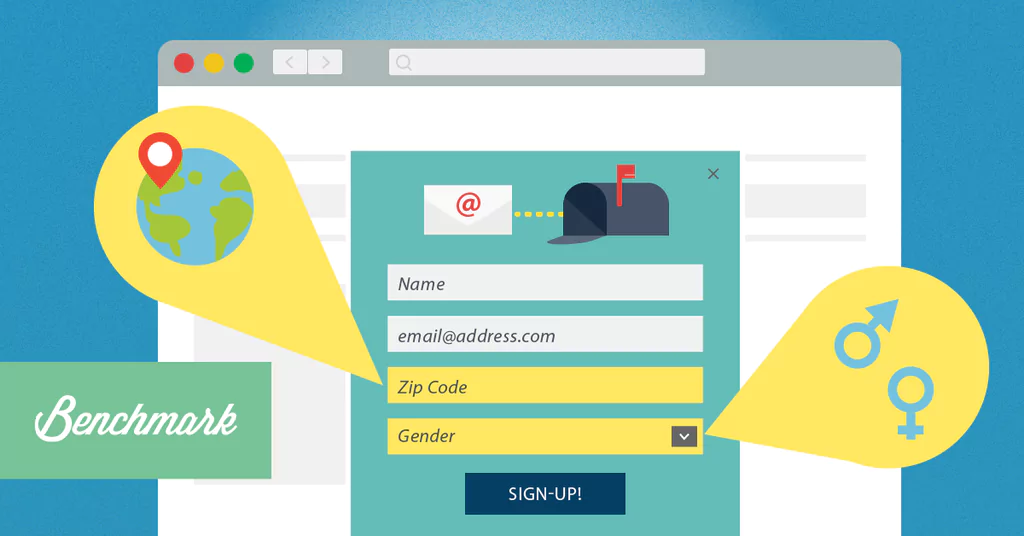Which is better: text-based emails or HTML? The debate is almost as old as email marketing itself. In 2011 and 2014, HubSpot asked survey takers which they prefer, and both years a majority chose HTML. In practice, though, simple, text-based email designs win out time and time again in A/B testing.
Of course, it would be silly to write off HTML emails — and in fact, images, videos, and creative design elements are some of the most memorable features of successful email marketing. What is there to make of it all then? In this post, we’ll explain the basics of both text-based emails and HTML emails as well as their pros and cons so that you can decide for yourself which is worth your time and effort.
Plain Text Emails
Plain text emails are messages that contain text without any additional flair, such as fonts, colors, or design elements. Nothing is embedded, including images or links. They’re just plain Jane, good ole’ fashion text emails — the same as you might send to your friends or colleagues.
These types of emails were commonplace when emails were first being used in marketing. For obvious reasons, too, considering we hadn’t yet tapped the potential of what emails could be and look like — or built an infrastructure of email tools and platforms to aid in their transformation.
Pros
- They’re better for one-on-one email correspondence. Where plain text emails really excel is with sales letters and updates. They’re inherently personal, and offer quick, clean information without any added fluff.
- They load quickly. No buffering times needed for plain text emails, since there’s not much to load in the first place.
- They work on every device. Mobile, tables, desktops, laptops… you name it, and plain text emails work on it, too. While with HTML, you have to worry about certain features getting warped when going from device to device, plain text appears as-is no matter where you open it.
- They’re more accessible to those with disabilities. Many individuals require the use of read-aloud software for email. The output can be confusing with HTML, however, since there are images and formatting changes breaking up the text. With plain text, the message is straightforward and comes across loud and clear.
Cons
- Their formatting isn’t up to you. When you use plain text in your email marketing, your messages are sent with ASCII text, giving you little to no control over their formatting. Your recipients might see the image broken up in a way you didn’t intend, or with a different font than what you originally used.
- They’re not as engaging. While they do get your point across succinctly, plain text emails lack the fun and engaging touches that you get from including embedded features. With little to draw the eye, the impact of your message is 100% reliant on the copy.
- They’re link-less. Plain text emails don’t make a ton of sense for marketing emails with a landing page CTA since, without links, you can’t directly drive traffic there.
- They’re harder to measure. All those links make the actions recipients take on HTML emails extremely easy to measure. Not so for plain text emails, where your only true measurement is who writes you back.
HTML Emails
HTML (or HyperText Markup Langage) emails are a much more visual approach to email marketing. You can incorporate your own colors, styles, and images, as well as all the links your heart desires. While they originally caused a lot of rendering issues, especially on mobile devices, the rise of responsive design has changed that, making it easier to send HTML emails that look just how you intended them to.
Pros
- They give you more design control. With HTML, you can optimize every design feature to your brand’s image and identity.
- They offer more utility. Images, links, and other media in emails all serve their own unique purposes — and HTML allows you to capitalize (or at least attempt to capitalize) on them.
- They’re engaging. The design elements you include in your HTML emails draw the eye and add variety to the page, all of which is good for performance.
- They’re trackable. With HTML, you can easily track open rates, click-through-rates, and a wide range of other conversion rates.
Cons
- They’re less trustworthy. The average consumer is a lot savvier than they used to be, especially when it comes to email-based malware. As such, they might be wary of links and attachments, since these can spread viruses.
- They’re more likely to go to spam. Email providers use a whole host of different qualifying measures to decide what goes to spam and what goes to the inbox. And because they’re so varied in features, HTML emails tend to send off more red flags than their plain text counterparts.
- They’re less accessible to those with disabilities. HTML emails can be tricky for read-aloud software to adapt for users, which means your message might not come across clearly or concisely.
Both plain text and HTML emails service a purpose — it just comes down to what you’re trying to achieve. Do what most marketers do and send a hybrid of both to maximize your email marketing potential.











